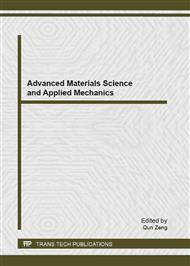p.269
p.275
p.280
p.286
p.291
p.297
p.304
p.310
p.318
On the Theory of Stochastic Transformation Method
Abstract:
The Stochastic Finite Element Method (SFEM) represents a new approach to solve mechanical systems with stochastic characteristics. The SFEM is based on the deterministic Finite Element Method in which some variables related to the structural state (variables involved in the stiffness matrix) and to the applied actions (involved in the load vector) are uncertain. In other words, the SFEM tries to look for the stochastic properties of the mechanical response. The solution of a stochastic mechanical system is completely defined through the evaluation of the probability density function of the response process. This cannot be analytically achieved through most of the available methods and techniques such as Fokker-Planck equation, Wiener-Hermite expansion, perturbation methods, stochastic linearization, WHEP technique, decomposition method and stochastic finite element methods [1; 2]. Some exact solutions are available for the mean and standard deviation, not for the Probability Density Function (pdf), of the solution process. In this paper, we develop the theory of method named the Stochastic Transformation Method (STM) in order to determine the pdf of the response of a stochastic mechanical system with random excitation and/or stiffness. The Stochastic Transformation Method is based on one-to-one mapping between the random output(s) and input(s) where the transformation Jacobean J can be computed. The pdf of the output(s) is then computed through the known joint pdf of the inputs multiplied by the determinant of transformation Jacobean matrix. The one-to-one mapping condition can be relaxed through some mathematical tricks. This STM allows us to express the “exact” pdf of the mechanical response [3], provided that the transformation Jacobean can be defined. For many cases, the pdf of the response can be obtained in a closed-form in terms of the joint distribution of the input random variables.
Info:
Periodical:
Pages:
304-309
Citation:
Online since:
May 2013
Authors:
Price:
Сopyright:
© 2013 Trans Tech Publications Ltd. All Rights Reserved
Share:
Citation:


